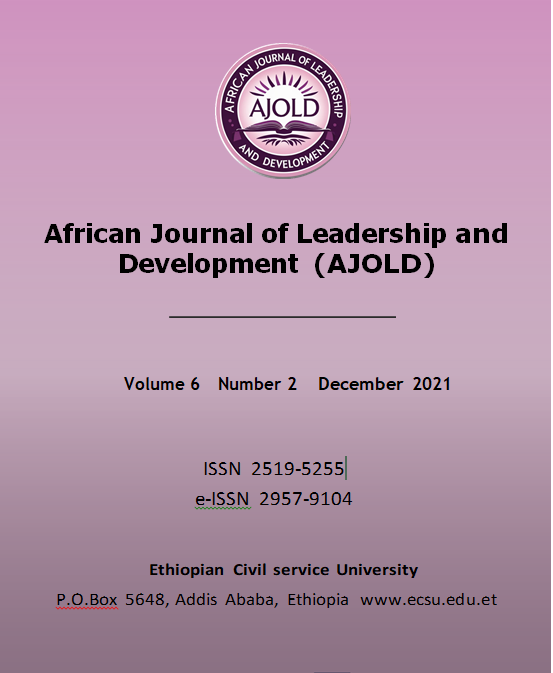Service User Perception of Service Quality in Addis Ababa City Administration, Ethiopia
DOI:
https://doi.org/10.63990/2021ajoldvol6iss2pp86-99Keywords:
Service quality, Organization, User perception, Expectation, Addis Ababa CityAbstract
Public sector organizations exist to provide services to citizens and citizens are service users, be it in public, private or other institutions. The purpose of this research is to evaluate the service quality gap in users’ perception in select public sector organizations in Addis Ababa City. A cross-sectional survey method was applied and the sampling was carried out across three select government organizations. A questionnaire and interview method was used to gather the data. As a mixed method study, the analysis consisted of both quantitative and qualitative approaches. The research targeted 415 subjects for their service user perceptions, but 402 questionnaires were completed successfully, giving a 96.87% response rate. 63.9% were male and 36.1% were female respondents. Near to half percent of the respondents were married and most of the respondent was 9—12 completed. A statistically significant mean difference was observed between the overall level of assurance expectation (t = 3.631, p < 0.01) but insignificant mean difference was observed in service user perception (t = 1.797, p > 0.05). From the regression result responsiveness, assurance and empathy were statistically significant predictors of service user perception with the (p < 0.05), whereas tangible and reliability were found to be statistically insignificant in this study area.
Downloads
Published
How to Cite
Issue
Section
License
This work is licensed under a Creative Commons Attribution-NonCommercial 4.0 International License






